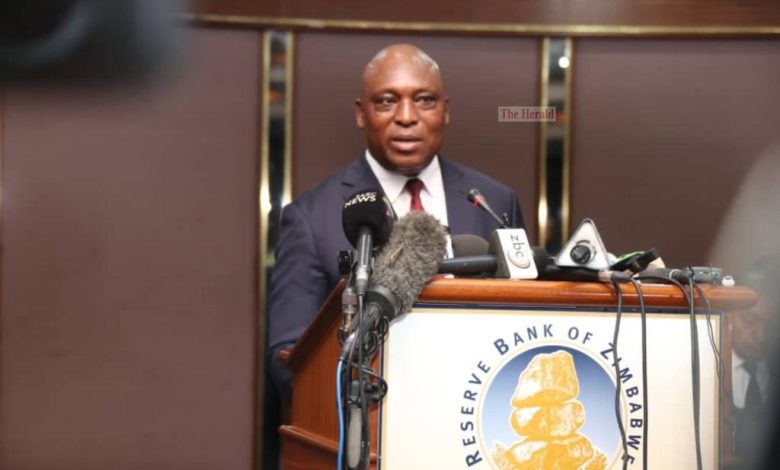Industry capacity utilisation increases to 56,5pc: CZI
Capacity utilisation in the manufacturing sector jumped to 56,52 percent in 2021 from 47 percent in 2020 largely driven by increased investments in the industry.
According to the Confederation of Zimbabwe Industries (CZI) 2021 manufacturing sector survey report launched in Harare yesterday, surveyed firms invested US$147 million towards new capacity, with the funds largely coming from the Reserve Bank of Zimbabwe (RBZ’s) foreign currency auction system.
“37,8 percent of the manufacturing sector undertook investments to increase their production capacity in 2021 and this resulted in additional capacity of 25,6 percent,” Dr Cornelius Dube, the CZI chief economist, said while presenting the survey report.
He said about 57 percent of the manufacturing sector, firms registered an increase in sales with the drinks and tobacco sub-sector recording an 82 percent in output and had the highest percentage of firms registering an increase in sales.
Industry and Commerce Minister Dr Sekai Nzenza, in her remarks, said the growth in capacity is in response to an enabling business environment and the ease of doing business reforms prioritised by the Second Republic.
“Testimonial to this, the manufacturing sector has realised a 5,5 percent increase in exports from US$383 million in 2020 to US$404 million in 2021. In addition, we welcome the Zimbabwe National Statistics Agency (Zimstat) timely figures on provincial GDP with Harare having $294 billion out of $1,157 billion in 2020, thus contributing 24,4 percent to national GDP,” she said.
She noted that the survey comes soon after the holding of a successful ZITF in Bulawayo last month, which showcased the country’s local products, attesting to the fact that 75 percent of shelf space occupancy in the retail sector is coming from local manufacturers.
Minister Nzenza said the 2021 annual manufacturing sector survey report showed positive signs of sustained growth of the manufacturing sector with the average increase in output being 30 percent.
“In addition, in response to the enabling business environment, about 38 percent of companies in the manufacturing sector undertook investments to increase their production capacity in 2021 and these investments created additional capacity of 25,6 percent,” she said.
She indicated that capacity utilisation was lower than the targeted 61 percent mainly due to the inclusion of small-scale players in the survey sample. But the capacity of largescale manufacturing sector firms was 62,7 percent.
Minister Nzenza said the Government was pleased that CZI conducted the survey in collaboration with the University of Zimbabwe, Midlands State University, Solusi University and Africa University for data collection which involved physical visits to identified manufacturing sector firms.
She said this closely aligns with President Mnangagwa’s approach which also sees universities and businesses innovating towards the 4th industrial revolution. With respect to employment creation, the Minister noted that the majority of firms at 53,5 percent created new jobs in 2021, with the new jobs constituting about 19 percent of total employment.
She added that 16 percent were retrenched, with the rest maintaining their employment levels.
“This strong manufacturing sector performance in 2021 can be attributed to the favourable Government policy of allowing foreign currency access to industry, which had been one of the key constraints in previous years.
“In addition, the Government recently announced measures to curtail runaway inflation and stabilise the foreign exchange market. We trust that business will continue to support Government policies as we remain focused on our long-term growth trajectory,” noted Minister Nzenza.
CZI president, Mr Kurai Matshezha, in a speech read on his behalf by his deputy, Victoria Jakazi, said the performance in 2021 managed to sustain that growth momentum on the back of policy makers ability to maintain stability that gave industry an environment in which to grow.
He said industry managed to invest in new technologies, expansion of plant and installation on new plant and created jobs in that growth momentum.
“Our hope is that the risks that now face us due to the currency environment and the measures that have been announced will be quickly resolved so that we do not lose this momentum for growth.”
Mr Matshezha said getting the price of foreign currency right is a fundamental matter of Zimbabwe’s economic development interest and correcting the exchange rate pricing is what will stabilise the economy and provide some room to continue on the growth trajectory that was experienced in 2021.
“This would also create room for the authorities to address the structural issues for long term sustained growth and stability.
“We are convinced that convergence of the rates brings stability as this was achieved at the beginning of the auction when a large part of the economy was indifferent to holding the local currency,” he said.
He noted at the beginning of the auction system, the parallel market premium was down to 20 percent, inflation was on a downward slope and investments in new projects were witnessed.
“An efficient price discovery must be allowed and an efficient market established, as without doing this the authorities will be chasing symptoms which continue to mutate as long as the arbitrage windows remain open.”
Mr Matsheza added that there is a need to ensure that the positive momentum gained in 2021 is maintained.
“It is essential to ensure that the operating environment is stable, especially bringing finality to the currency and inflation challenges.”
Despite the challenges faced in 2021, Mr Matshezha said the industry was resilient, and it sustained the growth witnessed in 2020. Industry will continue to work with the Government to improve the business environment towards attainment of vision 2030.
Meanwhile, according to the survey report, 42,7 percent of the manufacturing sectors are accessing the foreign exchange auction market.
The report said that companies are obtaining 39,5 percent of their foreign currency requirement from the auction market.-The Herald











